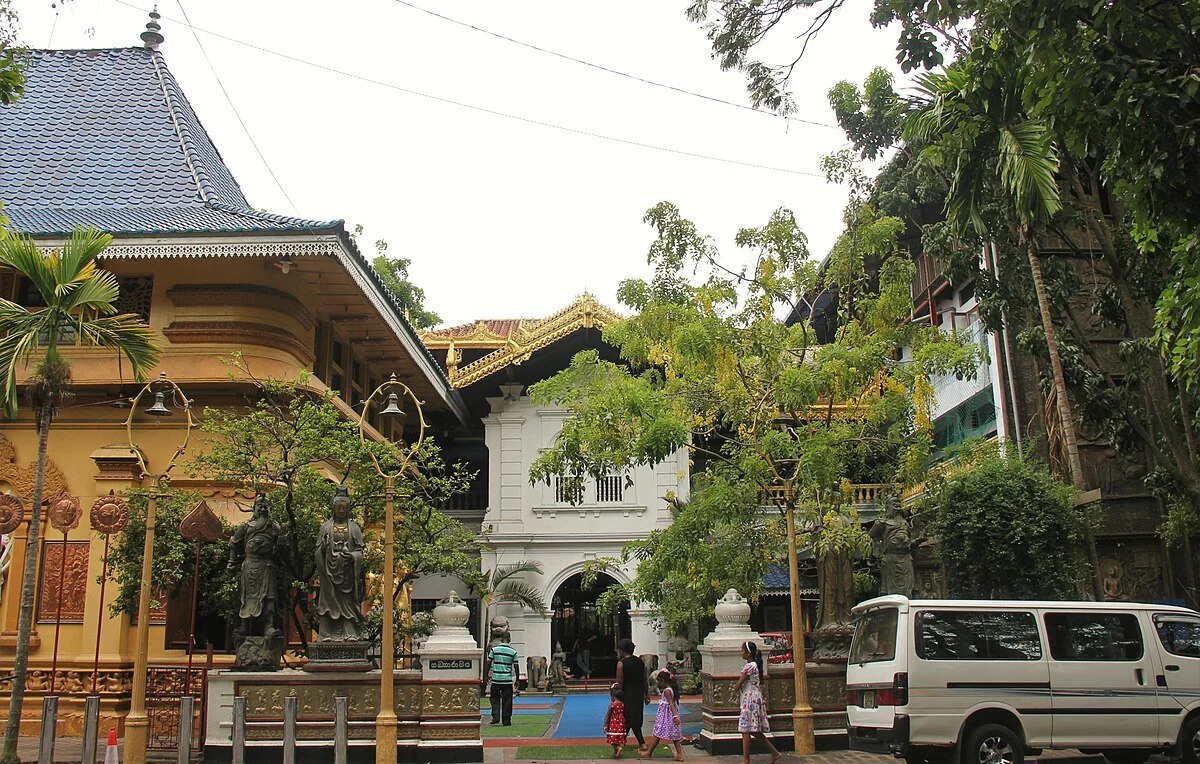colombo
Colombo, Sri Lanka's capital, provided a rich and layered site for our fieldwork on urban space, heritage, and contemporary Buddhism. As a city shaped by colonial legacies and rapid modernization, Colombo presents a unique case where Buddhist heritage is not confined to historical monuments but is actively lived and negotiated within urban life.
Sasanka Perera and Pooja Kalita’s fieldwork explored how Buddhist institutions and symbols continue to occupy prominent spaces in the city’s landscape. For instance, sites such as Gangaramaya Temple located near the heart of Colombo, blend traditional religious architecture with modern urban aesthetics, reflecting how Buddhist spaces adapt to contemporary city life.
Gangaramaya Temple, Colombo, Sri Lanka. Photo: AKS.9955, CC BY-SA 4.0 via Wikimedia Commons.
They also examined less formal expressions of Buddhism in the city: roadside shrines, Bodhi trees protected amidst traffic junctions, and temporary structures erected during festivals like Vesak. These elements reveal how Buddhist practices are embedded in everyday urban spaces, contributing to a shared sense of identity and continuity. Their research considered how heritage is constructed and preserved in Colombo. The tension between conservation, commercialization, and urban development was evident, raising questions about what constitutes ‘authentic’ Buddhist heritage in a modernizing metropolis. Colombo offered valuable insights into how contemporary Buddhism is spatially manifested, culturally expressed, and continuously reshaped in response to the dynamics of urban transformation.

